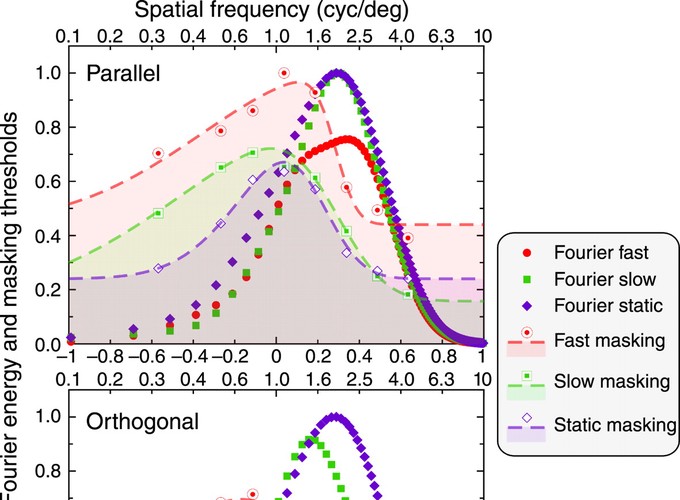Abstract
We previously reported that fast-moving dot arrays cause orientation-tuned masking of static gratings (D. Apthorp, J. Cass, & D. Alais, 2010), which we attribute to “motion streaks.” Using similar “streaky” dot motion, we describe spatial frequency tuning of grating threshold elevations caused by masking (Experiment 1) and adaptation (Experiment 2) to motion. To compare the streaks with psychophysical tunings, we Fourier analyzed time-averaged translating dots, which were bandpass (peaking at ∼2.3 c/deg). Masking, however, was strongest at lower test frequencies (≤1 c/deg) and largely isotropic over orientation, although a small orientation-tuned effect occurred at ∼1.2 c/deg. Results were broadly similar across monoptic and dichoptic conditions. Adaptation to fast motion produced spatially bandpass threshold elevations for parallel test gratings, peaking slightly lower than the peak Fourier frequency, with little elevation below 1 c/deg (unlike the low-pass elevation resulting from masking). Slow adaptation produced little elevation for parallel gratings. For orthogonal test gratings, fast motion adaptation produced low-pass threshold elevations and slow motion produced bandpass elevations, suggesting that separable mechanisms process fast (streaky) and slow motion. The different threshold elevation patterns over spatial frequency for masking and adaptation suggest that the adaptation effects are mainly within-channel suppression, whereas the masking effects may be mainly due to between-channel suppression.
